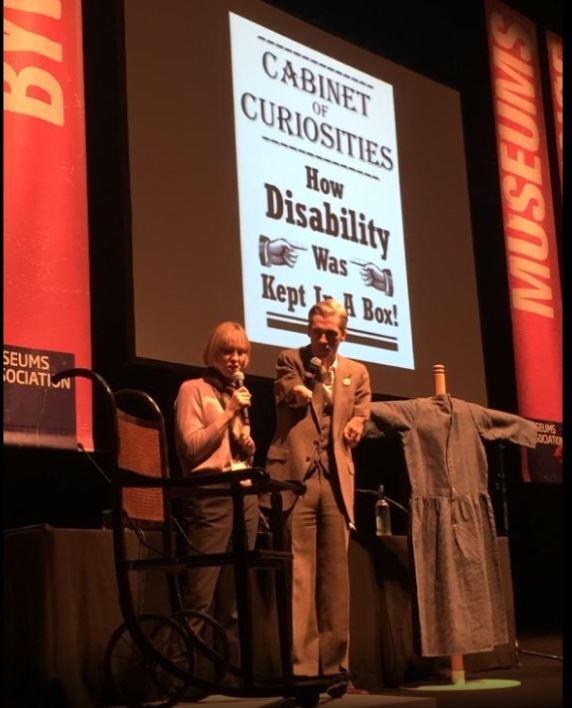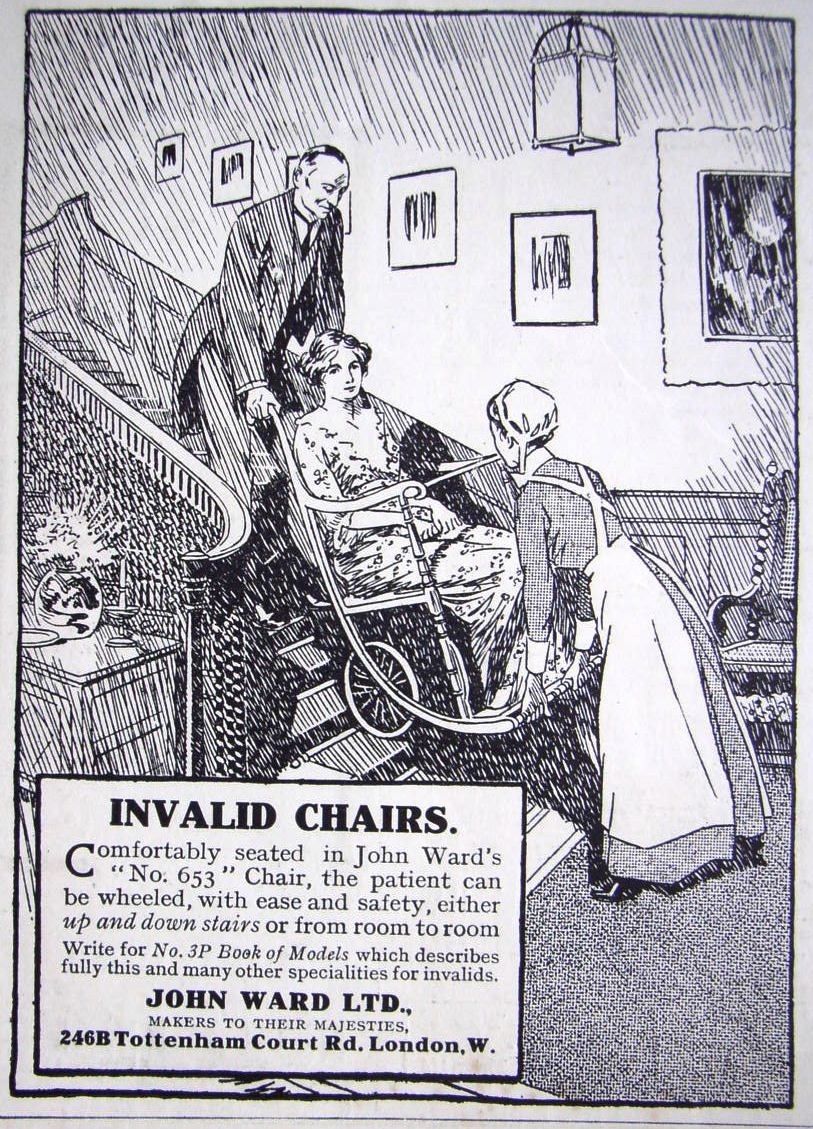UK Disability History Month - Invalid Chair
, 7 Rhagfyr 2015
The focus for UK Disability History Month this year is how disability and disabled people have been portrayed in the past and present.
With this in mind, I revisited some objects in the collection at St Fagans which made an appearance on the Welsh Millennium Centre stage last year. These objects had been selected by Mat Fraser to be used in his keynote address at the Museums Association Conference in Cardiff, October 2014. Mat’s ground-breaking performance, Cabinet of Curiosities: How Disability was kept in a Box looked at museum collections and how we should reassess the ways we portray - or as in most cases - don’t portray disability.
One of the objects selected by Mat for his show was an early wheelchair, or ‘invalid chair’ as they were once referred to. At first, I was surprised that the chair was among Mat’s choice of objects for the simple reason that there wasn’t much to say about it. I later realised of course, that it was exactly the point he wanted to make.
When we initially received the request to list potential candidates from the Museum’s collections for Mat’s performance, we knew it wasn’t going to be an easy task. The Museum’s classification didn’t include a section on disability so the only way of searching was to systematically trawl through all of the index cards. The few invalid chairs in the St Fagans collection were catalogued under the theme of transport, among various wheeled vehicles, from agricultural carts to bicycles.
The chair was collected by the Museum in 1985 from a house in Cardiff along with other various objects but there was no further information in the file about the donor or its previous owner. So I started to do a bit of research.
It seems that this type of folding invalid chair would have been manufactured from the early 1900s up until the Second World War. It has a cane seat and back, and a wooden frame which means it’s not too heavy to manoeuvre. It was designed with two small wheels at the back so that it could be wheeled up and down stairs by two people without having to lift the chair ‘saving effort and reducing the risk of accident’. [1]
There’s no maker’s name on the chair but it’s very similar to models manufactured by the more well-known specialist makers from London such as John Ward, Tottenham Court Road, and Carters of Great Portland Street. Their products were advertised in newspapers and could be purchased from catalogues. Their ranges included the more expensive bath chairs with leather upholstery to basic chairs such as this example, costing around £3 in the early 1900s.
However, this was still expensive for the majority of the population. In the industrial south Wales valleys during the first half of the twentieth century, many medical aid societies would help with the purchase or loan of wheelchairs and mobility aids.[2] After the First World War the British Red Cross also lent surplus equipment such as bed rests and invalid chairs which could be hired out on a weekly basis – a service which continues today.
Without knowing why or who used this chair, we are still missing a big part of its history. Sadly, this is also true of most disability-related collections in museums. As Mat Fraser noted in his keynote address last year:
‘...but we know nothing about it, and this illustrates so many artefacts to do with disability – they have no notes. Nobody knows anything. So I suppose the only thing I would take from that is to say that when we have artefacts, we need to label them, we need to get the right people to write the right notes to accompany some of these artefacts because conjecture would be very different for every single one of us as to where this came from. And yet, none of us will never know the real truth which exemplifies and illustrates many points.’
[1] The Concise Home Doctor Encyclopaedia of Good Health Vol 1, p.303
[2] Ben Curtis and Steven Thompson, ‘A Plentiful Crop of Cripples Made by All This Progress’: Artificial Limbs and Working-Class Mutualism in the South Wales Coalfield, 1890-1948’, Social History of Medicine (2014) 27 (4): 708-727.



